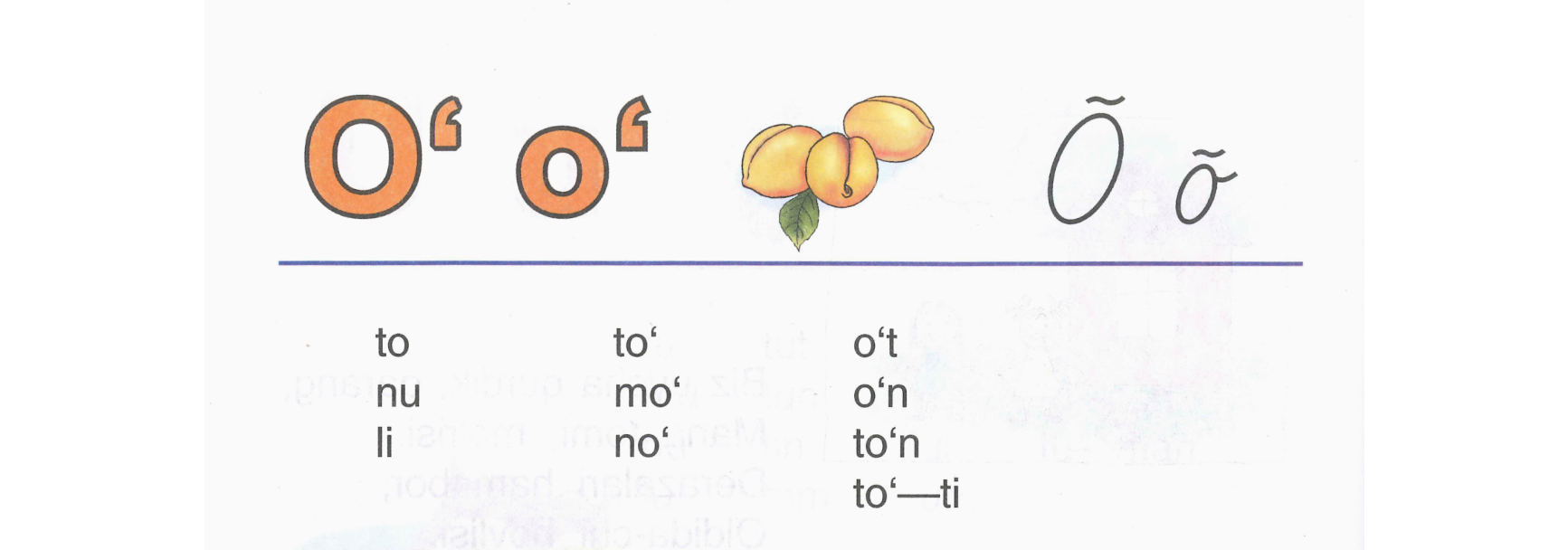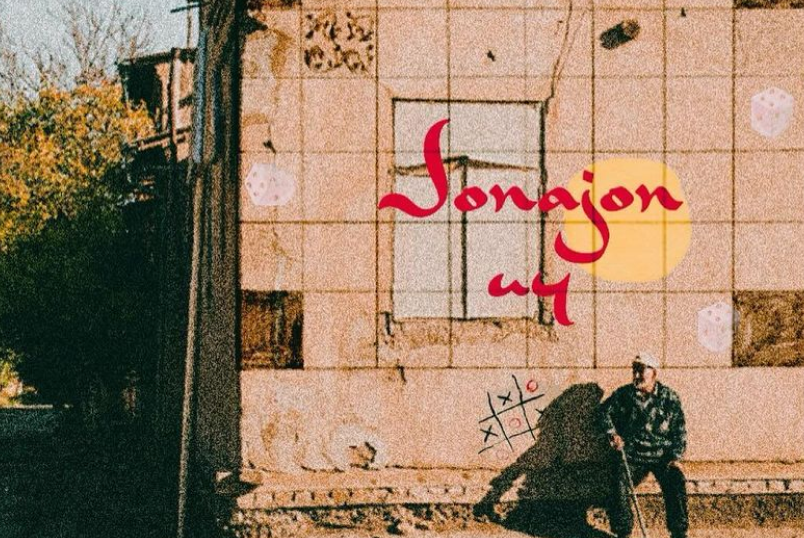This piece is a next episode of our large series focusing on the languages that are not discussed nearly as much as they should be. This list includes languages with their own unique scripts, such as Georgian or Armenian, as well as languages using extended Cyrillic and Latin. This episode has been prepared in collaboration with the team of the Nationwide Children’s Library in Tashkent, which is about to host an exhibition on the history of Uzbek written culture, starting on December 4.


From Arabic to Latin
Until the 8–9th centuries, the people living within the territory of modern Uzbekistan used Turkic runes, the Old Uyghur vertical alphabet, and the Aramaic writing
 From the book Baburnama (Memoirs of Babur), 15th century
Image courtesy: Los Angeles County Museum of Art
From the book Baburnama (Memoirs of Babur), 15th century
Image courtesy: Los Angeles County Museum of Art





From the book Mezon ul-Avzon (the Scales of the Sizes) by Ali-Shir Nava’i, the 1949 edition. The book was published in two languages, Chagatai (Arabic) and modern Uzbek (Cyrillic).
In the late 19th century, Tashkent got a printing shop equipped with Cyrillic and Arabic cases brought from St. Petersburg, and that’s how mass printing of books, newspapers, and magazines started in present-day Uzbekistan. That said, handwritten books and lithography were common up until the first quarter of the 20th century, which is explained by the specifics of the Arabic alphabet. After the arrival of printing, the Chagatai alphabet was reformed, yet a unified, fixed linguistic standard was never
 Al’-Izakh muslim magazine, 1917
Al’-Izakh muslim magazine, 1917
The Uzbek version of Turkic Latin, Yañalif, was developed in 1929 and significantly modified five years later. Yañalif was developed with regard to the vowel harmony Vowel harmony is a phonological pattern in which vowels within a word — share one or more phonological features, like lip rounding or tongue position, however, by that time this feature no longer existed in many regions, and the 1934 reform revoked the vowel harmony orthography, along with these four letters: Өө, Yy, Ьь, Əə.
A new project developed by 1937 suggested adding to the Uzbek Yañalif a new letter, Åå, but the idea soon lost its relevance, as by the late 1930s the Soviet Union started the process of cyrillisation of Turkic languages.
 Yañalif, 1929. Image Courtesy: Zaynobiddin Abdurashidov
Yañalif, 1929. Image Courtesy: Zaynobiddin Abdurashidov


Farhad and Shirin by Ali-Shir Nava’i, 1940 edition
 Cover of Humorous Stories by Gʻafur Gʻulom. Designed by artist Iskandar Ikramov, 1932
Cover of Humorous Stories by Gʻafur Gʻulom. Designed by artist Iskandar Ikramov, 1932
 Khamsa by Ali-Shir Nava’i, 1941 edition
Khamsa by Ali-Shir Nava’i, 1941 edition
 Each Mother, Each Father…. poster, Nadezhda Kashina, 1933. Image courtesy: Museum of Arts of Uzbekistan
Each Mother, Each Father…. poster, Nadezhda Kashina, 1933. Image courtesy: Museum of Arts of Uzbekistan
 Book and the Living Word poster, Nadezhda Kashina, 1933. Image courtesy: Museum of Arts of Uzbekistan
Book and the Living Word poster, Nadezhda Kashina, 1933. Image courtesy: Museum of Arts of Uzbekistan
 A Child Is Allowed…. poster, Nadezhda Kashina, 1933. Image courtesy: Museum of Arts of Uzbekistan
A Child Is Allowed…. poster, Nadezhda Kashina, 1933. Image courtesy: Museum of Arts of Uzbekistan
 What’s Unhealthy for the Child… poster, Nadezhda Kashina, 1933. Image courtesy: Museum of Arts of Uzbekistan
What’s Unhealthy for the Child… poster, Nadezhda Kashina, 1933. Image courtesy: Museum of Arts of Uzbekistan
 What’s Healthy for the Child… poster, Nadezhda Kashina, 1933. Image courtesy: Museum of Arts of Uzbekistan
What’s Healthy for the Child… poster, Nadezhda Kashina, 1933. Image courtesy: Museum of Arts of Uzbekistan


Comparison of the Two Languages by Ali-Shir Nava’i, 1940 edition
 The Month of Cheap Books (Arabic, Cyrillic, Yañalif). Photography: Ivan Pavlov. Tashkent, 1930s
The Month of Cheap Books (Arabic, Cyrillic, Yañalif). Photography: Ivan Pavlov. Tashkent, 1930s
Cyrillic
The work on Uzbek Cyrillic writing began in 1939, and three years later the Uzbek SSR completely switched to Cyrillic writing. Linguists later suggested finalising the alphabet, which is to change the order of letters, introduce Щщ and Ыы, remove Ҳҳ. But the only change made was replacing the apostrophe with the letter ъ.
 Uzbek textbook for Russian-speaking schools in Uzbekistan, 1989
Uzbek textbook for Russian-speaking schools in Uzbekistan, 1989
In the 1980s, many people in Uzbekistan started to learn Arabic and Chagatai in order to be able to read the original texts that had formed the modern Uzbek language. The Arabic script is associated with Islam, so it was a significant risk to study Arabic when the Soviet authorities were actively cracking down on religion.




Self-teaching guide for Chagatai writing, 1989


Arabic textbook, 1991
Throughout his career, Uzbek graphic artist and book artist Iskandar Ikramov (1904–1972) had a chance to work with all three



Student notebooks of Iskandar Ikramov, 1923
 Book covers sketches, Iskandar Ikramov, 1932
Book covers sketches, Iskandar Ikramov, 1932



From the book Learn How to Write Letters, Iskandar Ikramov, 1935


Book covers sketches, Iskandar Ikramov, 1940s
Latin
After the Soviet Union collapsed, a number of Turkic republics decided to get back to Latin. The first draft of the new Uzbek alphabet, containing six characters with diacritics, was developed in 1993. Two years later four of them (Çç, Ɉɉ, Ññ, Şş) were replaced with digraphs, and the other two, Ğğ and Öö, were transformed into Gg and Oo with a backwards apostrophe(Gʻgʻ,Oʻoʻ). This character cannot be found in the Latin-based alphabets of other Turkic languages, but it is used in the Hawaiian language (referred to as the okina), where it is considered a letter rather than diacritics. In most fonts, the okina comes as an inverted single quotation mark, and it is different in size from a quotation mark in some type families.

If you choose a typeface for an Uzbek-speaking design, make sure that spacing between Oo/Gg and the «okina» is not too loose (to avoid any holes in your typeset).
 Typefaces from Google Fonts suitable for Uzbek-speaking design
Typefaces from Google Fonts suitable for Uzbek-speaking design
As the inverted quotation mark is not something you have on a smartphone keyboard, it is often replaced with a single quote. Although the single quote is easily confused with an apostrophe or a prime used to designate minutes, it is incorrect to use it instead of an inverted quotation mark. But as long as there’s no established standard, both options are still used.
 Apostrophe-quote, prime used to designate minutes, single quotation marks
Apostrophe-quote, prime used to designate minutes, single quotation marks

In handwritten text, Õõ are applied instead of Oʻoʻ, and Ğğ serves as Gʻgʻ. In 2023, a group of Uzbek linguists proposed to replace the characters using diacritics with characters using a tilde and a breve in print, too (as well as to replace Chch and Shsh* digraphs with **Şş and Çç respectively.)



Śāka & Sogdia store identity concept, Yulia Saatova, 2021



Posters about home, Alina Mish, 2023
What’s the situation now?
Technically, it’s Latin that holds the official status in Uzbekistan. Textbooks are printed in Latin, and the young generation, actively using the Internet, had no problem switching to it. However, it is far more difficult to transition from one script to another when it comes to older people, which is why one can submit applications to the public authorities and read media outlets in both Latin and Cyrillic.
The Uzbek diaspora in Afghanistan still uses Arabic (for instance, BBC Afghanistan features a page in Arabic-based Uzbek). The first modern Arabic Uzbek dictionary was published in 2008. Uzbek native speakers who are only familiar with Cyrillic and Latin won’t be able to read that
